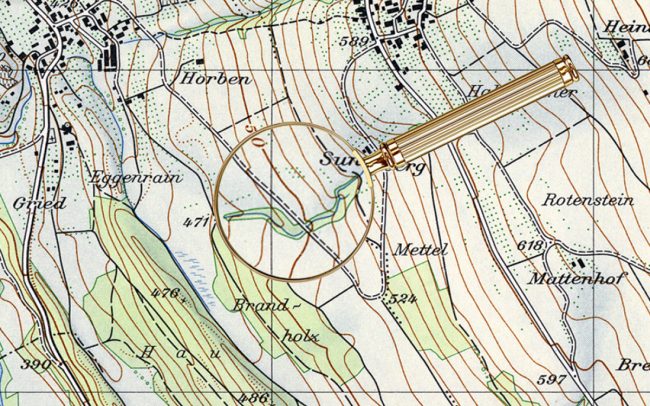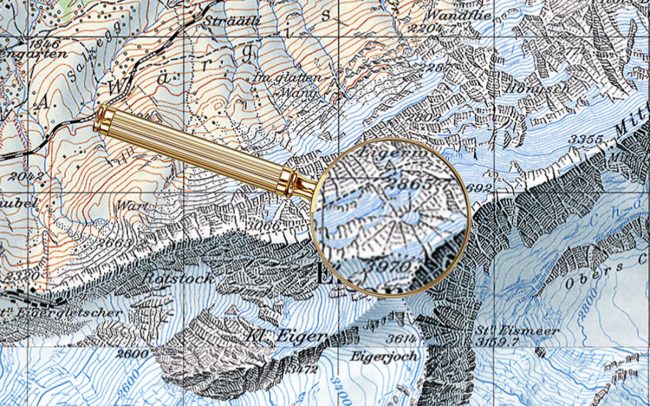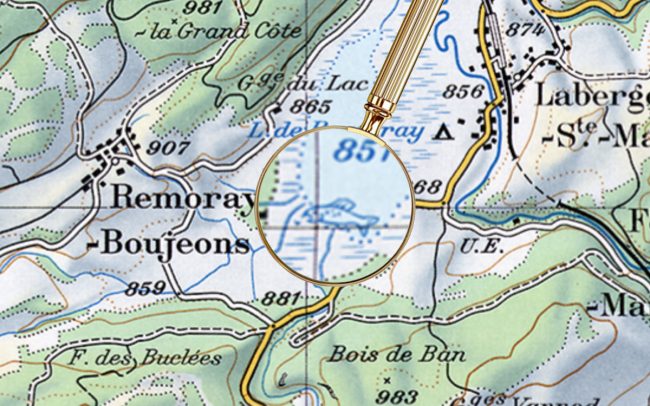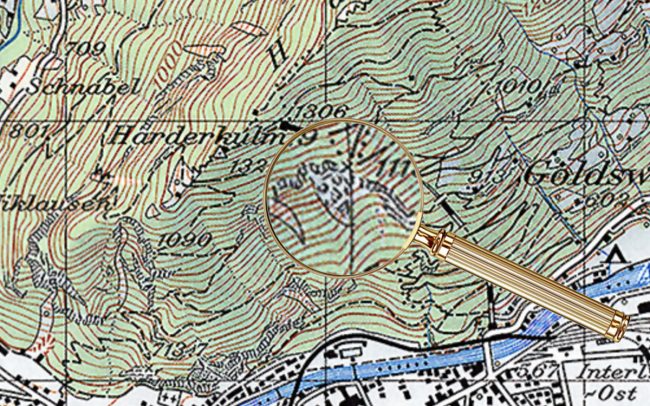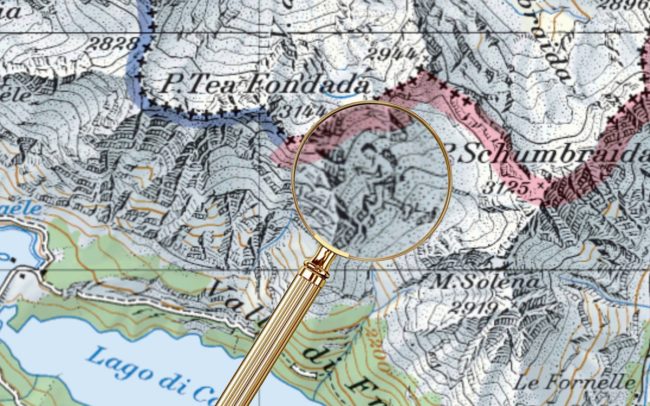The work of a cartographer leaves little room for creativity, as maps must accurately represent locations. However, for several decades, cartographers at the Swiss Federal Office of Topography have discreetly challenged their roles by secretly inserting hidden illustrations into official maps of Switzerland.
From a marmot hidden among the contours of the Swiss Alps to a fish blending with the grooves of a French nature reserve, it's surprising that these designs have gone unnoticed for years.
You may have heard that Switzerland has a data center situated in an old military bunker. This is nearly the most secure data center in the world, and its location has been classified information for many years. It simply wasn't visible on Swiss maps, which, incidentally, are highly detailed.
For decades, cartographers have concealed small images in official topographic maps of Switzerland. They have attempted to outwit one of the world's strictest mapping organizations in order to leave a memento of themselves.
The three dimensions familiar to geographers—longitude, latitude, and altitude—are used in all topographic maps. The "fourth dimension," or time, can be seen on the Swisstopo website (Swiss Federal Bureau of Topography). In Time Travel, you can view the country's 175-year cartographic history in 5-10 year intervals. In just two minutes, Switzerland is drawn with increasing accuracy. Fuzzy ink borders become precise, the map acquires new shades of color, and by 2016, the serifs vanish.
It is quite fascinating to watch the country's territory change over time, to observe small historical events and landscape refinements. Gradually, railway stations and airports appear, while the post-war gunpowder factory disappears.
Yet, in some parts of the map (especially those far from the country's center), you might suddenly spot a spider, a human face, or even a naked woman. These barely visible images are not mistakes or accidents, but Easter eggs from the cartographers. Indeed, these intentionally created illustrations blatantly defy Swisstopo's primary mission: the representation of reality. All maps published by the bureau undergo rigorous checks for inaccuracies and errors. Thus, the presence of an "illegal" drawing on the map indicates that the cartographer has outwitted their colleagues.
However, even though the scientists who did this openly violated the organization's internal rules, none of those who left Easter eggs on the maps were fired. This is largely because most of the drawings were discovered long after the employee had left. In fact, many cartographers try to time the publication of their drawings with their retirement, delighting in the act.
The most recent drawing (a marmot) was discovered in 2016. Of course, it was removed from newer maps. After all, as a Swisstopo representative stated, "Creativity has no place on these maps."
There Have Always Been Mistakes on Maps
Note that map errors (both accidental and deliberate) are not uncommon. This was the case in the 17th century when California suddenly became an island. And the Battle of Waterloo was lost by Napoleon, largely due to an inaccurate map depicting a non-existent road, and a strategically important place, the Mont Saint-Jean farm, was in a completely different direction.
Or another example: you've probably heard more than once that military censors maps, turning secret objects into a blurry spot or otherwise altering them on the map. And cartographers often make small mistakes on purpose in order to catch potential copyright infringers.
In general, cartographers are meticulous people striving for maximum accuracy. Their professional lives usually focus on a postage stamp-sized piece of map. To maintain this level of concentration without becoming disgusted with work, scientists look for something that can take their work outside of the usual routine. And the emergence of hidden message-pictures is the result of such a search.
Some Easter eggs went unnoticed for quite some time. For example, a schematic representation of a naked woman has been on maps for almost 60 years. She could be seen in the north of Switzerland, in the commune of Egg. This light sketch, combining the green of the countryside and the blue line of the river, appeared in 1958. And the message was only discovered in 2012.
In 1980, a spider was painted on the Eiger. It emerged from an ice cap on the mountain and thin legs-borders. Over the next ten years, these legs were gradually removed from the maps until the spider disappeared completely. It was around this time that another cartographer hid freshwater fish in a French nature reserve along the Swiss border. The fish lived in the blue circle of the swampy lake until 1989, when Swisstopo removed it for good.
In general, it is extremely surprising that such drawings can be left on the map because they are repeatedly checked and read. Moreover, Swiss cartographers have a reputation for being extremely ardent in topographic rigor. They even had for seven years almost a "war of cartographers" that began in the 1920s due to the fact that national maps from the point of view of the Swiss Alpine Club were not sufficiently detailed. Unsurprisingly, Swisstopo's work is now considered the industry benchmark.
It is believed that Easter eggs are created at a time when the maps have already been approved, but cartographers are asked to make final corrections. It was also easier to make them when the maps were obtained by overlaying separate layers of different colors. Scientists could combine different topographic elements (as we said, the woman consisted of a blue line over a green background). There is also a suspicion that cartographers may have placed their drawings in the four corners of the map, but such an example has not (yet) been found.
History in Pictures
Interestingly, some of the drawings recreate local legends. For example, on the 1980 map near the city of Interlaken, you can see a triangular cartoon face hiding between trees. Initially, there were only stones, which, with a certain amount of imagination, resembled eyes and mouth. The cartographers completed the rest. According to local legend, this is a monk who was turned to stone as punishment for persecuting a young girl.
In the late 1990s, a climber appeared on the map. This image carried a secret message. It covered an area in the Italian Alps where the Swiss lacked information from the Italian Geographic Services. And it was decided to fill such a topographic spot in a very extraordinary way.
Another discovered image, which was mentioned earlier, is a marmot hiding in the Swiss Alps. Its plump shape was hidden in subtle relief shading above the glacier, which protected the Easter egg from detection for almost five years. Mountain strokes, short parallel lines that indicate the angle and orientation of the slope, form its fur. The marmot is almost indistinguishable from the surrounding landscape, so well it was incorporated into the map. Moreover, it is quite appropriate here from the point of view of zoology. Alpine marmots are comfortable at high altitudes and take shelter in rocks when it is time for hibernation.
The drawings of the fish and the marmot were quite tolerated; they quickly became something of an unofficial national feature. However, the fate of Easter eggs is sad: by the decision of the head of the cartography bureau, they will be removed from fresh topographic maps. However, no one knows by whom and when the next amusing drawing will be found, carefully hidden by the cartographer. Perhaps you will succeed? Moreover, in addition to Switzerland, there are many other countries with well-developed maps. And individual enthusiasts are looking for all kinds of Easter eggs on Google Maps.
